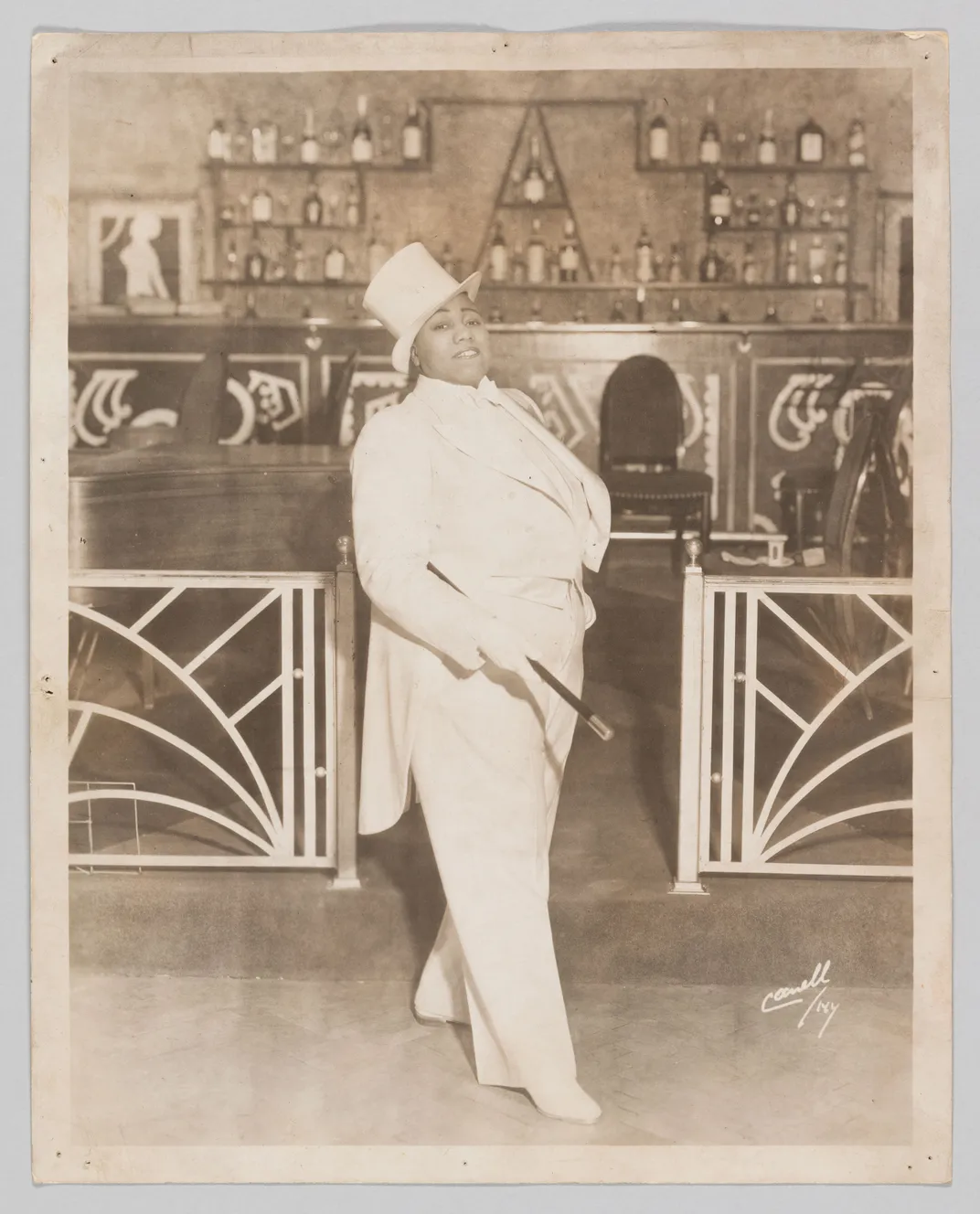For the Smithsonian’s Sidedoor podcast, host Haleema Shah tells the story of an unapologetically gay African-American performer in 1920s and 30s.
/https://tf-cmsv2-smithsonianmag-media.s3.amazonaws.com/filer/e8/10/e810d384-5022-4ddb-85b1-874effa7b4de/2013_46_25_15_001.jpg)
According to Jim Wilson, author of the book Bulldaggers, Pansies, and Chocolate Babies: Performance, Race, and Sexuality in the Harlem Renaissance, Harlem was also a community that the police turned a blind eye to during the Prohibition Era. People, many of whom were white, seeking entertainment and covert access to alcohol crowded into Harlem nightclubs, speakeasies and parties.
After graduating from the rent party circuit, Bentley got her shot at becoming a nightclub performer. In an article she wrote about her life for Ebony magazine, she said that soon after arriving in Harlem she auditioned at the Mad House, a venue on 133rd Street, which was in need of a male pianist.
 Gladys Bentley by unidentified photographer, ca. 1940 NMAAHC
Gladys Bentley by unidentified photographer, ca. 1940 NMAAHC
/https://tf-cmsv2-smithsonianmag-media.s3.amazonaws.com/filer/8b/75/8b752b12-93b7-4aa1-831a-d7fd6a814a3d/2011_57_25_1_001.jpg) Gladys Bentley: America’s Greatest Sepia Player—The Brown Bomber of Sophisticated Songs by an unidentified photographer, 1946-1949 NMAAHC
Gladys Bentley: America’s Greatest Sepia Player—The Brown Bomber of Sophisticated Songs by an unidentified photographer, 1946-1949 NMAAHC
In 1952, Bentley wrote her life story in an article for Ebony magazine, entitled “I Am A Woman Again.” In the article, she described the life of a glamorous performer who silently struggled with herself. “For many years, I lived in a personal hell,” she wrote. “Like a great number of lost souls, I inhabited that half-shadow no man’s land which exists between the boundaries of the two 𝓈ℯ𝓍es.”
Scholars who have studied Bentley’s life said that the story Bentley told about being “cured” in the Ebony article was likely a response to the McCarthy Era and its hostile claims that homo𝓈ℯ𝓍uality and communism were threats to the country. Wilson also says that Bentley, who was aging and no stranger to reinvention, was likely making deft use of the press. “I like to believe that Gladys Bentley had her thumb on the pulse of the time. She knew what was popular, what she could do, and what people would pay to see,” he says.